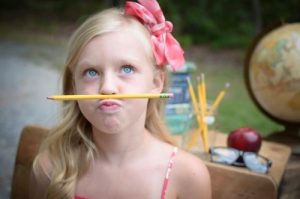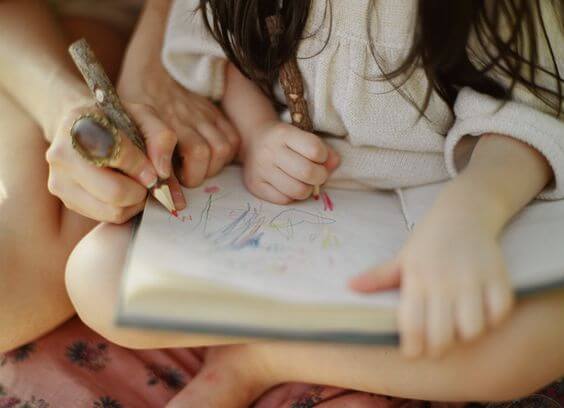11 Study Techniques for Kids


Reviewed and approved by the psychologist María Alejandra Castro Arbeláez
Study techniques for kids are specific and systematized activities. They are usually applied in order to make the learning process easier, which will no doubt help their academic performance.
In addition to improving academic performance, using good study skills has advantages such as increasing motivation, encouraging interest, improving cooperation, allowing more self-sufficiency, more initiative and creativity.
From an increased awareness of a child’s needs in the learning process, different study techniques have emerged to help them to develop their skills during this stage.
Fortunately, it is thought that knowledge should be presented in different ways.
To encourage the best study techniques for each child, we should always consider their developmental stage and individual characteristics, which range from their personality to the context in which they are learning.

Use These 11 Study Techniques
We will give you 11 study techniques for kids that parents or teachers can use to help each child access one that best fits their needs.
These study skills can either be used one after the other as a part of a general plan, or on an individual basis:
- Reading: In order to absorb any text, it should be read beforehand, and it is suggested to use two types of reading: 1) exploratory reading, or pre-reading. This first reading is fast. It introduces the child to the text and the narration, and the second is a comprehension reading. 2) After the initial reading, a comprehensive reading is done. It is recommended to stop at every paragraph and come up with a short oral interpretation of what was read in the last paragraph. That way, the interpretation of the text will be internalized.
- Underlining: Generally the technique of underling is learned step by step. Ideally, after finishing the previous step of reading, one would mentally identify the main idea and answer this question: What was the text trying to say to us? Starting with this question, a child can underline the most important parts of a text or paragraph to either understand the text better or for later studying.
- Note-Taking: This step entails further developing what has been underlined. It is important and useful for a child to write in their own words and not copy what the textbook says word for word. At the same time it is important to respect particular items that cannot be rephrased, for example: if the text is about a historical event, it is not practical to omit the dates from your summary.

- Drawing Mind Maps: Mind maps are very helpful, particularly for children who have a visual memory. However, even if your child does not have this type of memory, these maps tend to be useful because they connect key words with arrows through a network.
- Flash Cards: This method is useful when children need to memorize numbers or dates. It is usually used in subjects such as history, chemistry, math, geography, and languages.
- Quizzing: Quizzes help to determine how much content your child has learned and how much needs to be reviewed a little more. These are similar to multiple choice tests where you choose the correct answer from three or more possible answers.
- Using Mnemonic Devices: Mnemonic devices are used to connect a difficult-to-memorize term with one that the child recognizes. In this way a new idea is anchored to an already existing one. It is also very useful for remembering words and dates.
- Drawing: Many children use their ability to draw. This type of talent is especially useful in subjects such as geography, art, or history. A drawing can help you create visual mental associations.
- Recording Classes: Children who tend to acquire knowledge through audio usually record the lesson to later play back at home and then record themselves saying the same things in their own voice. This learning method is very powerful and useful, especially when the child can recognize their own voice in the recording, since this has the effect of the incorporation of much more accurate knowledge than listening to an unknown voice would.
And even though this is obviously not a study skill, it is crucial to have a clean and organized study space.
You should also know that you can apply these techniques in the above order like a study plan, which will facilitate your child’s learning.
Nevertheless, as we mentioned earlier, certain techniques end up being used more by some children than others, and this depends on the child’s individual capabilities, their personalities, their developmental stage, the context, and the topic you are covering.
Featured image from mylittlewalnutphotography.com.
Study techniques for kids are specific and systematized activities. They are usually applied in order to make the learning process easier, which will no doubt help their academic performance.
In addition to improving academic performance, using good study skills has advantages such as increasing motivation, encouraging interest, improving cooperation, allowing more self-sufficiency, more initiative and creativity.
From an increased awareness of a child’s needs in the learning process, different study techniques have emerged to help them to develop their skills during this stage.
Fortunately, it is thought that knowledge should be presented in different ways.
To encourage the best study techniques for each child, we should always consider their developmental stage and individual characteristics, which range from their personality to the context in which they are learning.

Use These 11 Study Techniques
We will give you 11 study techniques for kids that parents or teachers can use to help each child access one that best fits their needs.
These study skills can either be used one after the other as a part of a general plan, or on an individual basis:
- Reading: In order to absorb any text, it should be read beforehand, and it is suggested to use two types of reading: 1) exploratory reading, or pre-reading. This first reading is fast. It introduces the child to the text and the narration, and the second is a comprehension reading. 2) After the initial reading, a comprehensive reading is done. It is recommended to stop at every paragraph and come up with a short oral interpretation of what was read in the last paragraph. That way, the interpretation of the text will be internalized.
- Underlining: Generally the technique of underling is learned step by step. Ideally, after finishing the previous step of reading, one would mentally identify the main idea and answer this question: What was the text trying to say to us? Starting with this question, a child can underline the most important parts of a text or paragraph to either understand the text better or for later studying.
- Note-Taking: This step entails further developing what has been underlined. It is important and useful for a child to write in their own words and not copy what the textbook says word for word. At the same time it is important to respect particular items that cannot be rephrased, for example: if the text is about a historical event, it is not practical to omit the dates from your summary.

- Drawing Mind Maps: Mind maps are very helpful, particularly for children who have a visual memory. However, even if your child does not have this type of memory, these maps tend to be useful because they connect key words with arrows through a network.
- Flash Cards: This method is useful when children need to memorize numbers or dates. It is usually used in subjects such as history, chemistry, math, geography, and languages.
- Quizzing: Quizzes help to determine how much content your child has learned and how much needs to be reviewed a little more. These are similar to multiple choice tests where you choose the correct answer from three or more possible answers.
- Using Mnemonic Devices: Mnemonic devices are used to connect a difficult-to-memorize term with one that the child recognizes. In this way a new idea is anchored to an already existing one. It is also very useful for remembering words and dates.
- Drawing: Many children use their ability to draw. This type of talent is especially useful in subjects such as geography, art, or history. A drawing can help you create visual mental associations.
- Recording Classes: Children who tend to acquire knowledge through audio usually record the lesson to later play back at home and then record themselves saying the same things in their own voice. This learning method is very powerful and useful, especially when the child can recognize their own voice in the recording, since this has the effect of the incorporation of much more accurate knowledge than listening to an unknown voice would.
And even though this is obviously not a study skill, it is crucial to have a clean and organized study space.
You should also know that you can apply these techniques in the above order like a study plan, which will facilitate your child’s learning.
Nevertheless, as we mentioned earlier, certain techniques end up being used more by some children than others, and this depends on the child’s individual capabilities, their personalities, their developmental stage, the context, and the topic you are covering.
Featured image from mylittlewalnutphotography.com.
All cited sources were thoroughly reviewed by our team to ensure their quality, reliability, currency, and validity. The bibliography of this article was considered reliable and of academic or scientific accuracy.
- Cortese, A. (2011). Técnicas de estudio. Metodología de la investigación.
- Narváez, M. R. T., Guzmán, I. T., González, M. D. C. U., & Robayo, A. M. M. (2009). Hábitos de estudio vs. fracaso académico. Revista educación, 33(2), 15-24. https://www.redalyc.org/pdf/440/44012058002.pdf
- Pérez, H., & Raquel, L. (2018). Técnicas de estudio. http://repositorio.ucp.edu.pe/handle/UCP/499
- Ramos, C. B. (2007). La incidencia de las TICs en el fortalecimiento de hábitos y competencias para el estudio. Edutec. Revista Electrónica de Tecnología Educativa, (23), a077-a077. http://edutec.es/revista/index.php/edutec-e/article/view/497
- Sebastián, A., Ballesteros, B., & García, M. F. S. (2008). Técnicas de estudio. Universidad Nacional de Educación a Distancia. http://qinnova.uned.es/archivos_publicos/qweb_paginas/3439/tecnicasdeestudio.pdf
This text is provided for informational purposes only and does not replace consultation with a professional. If in doubt, consult your specialist.








